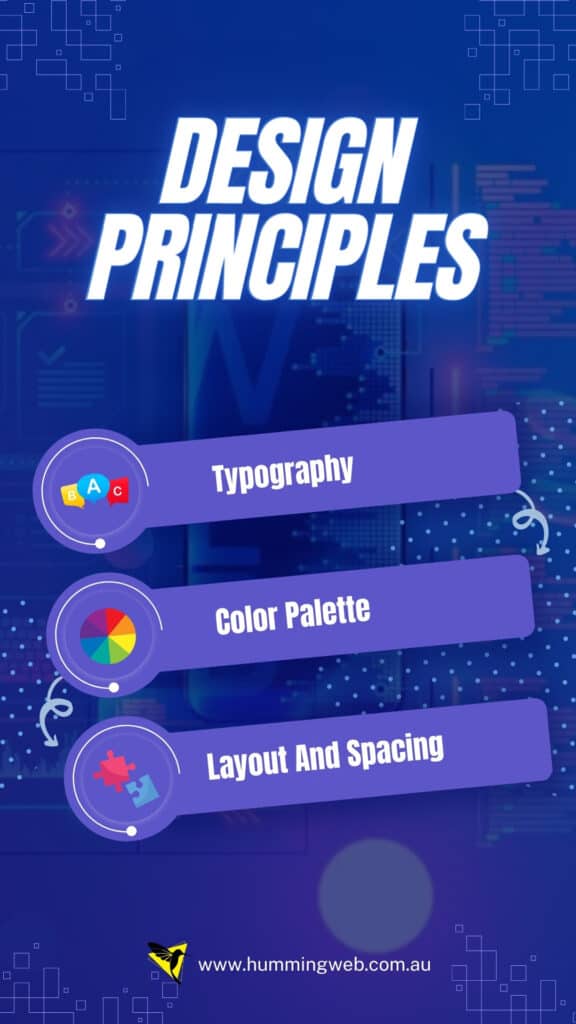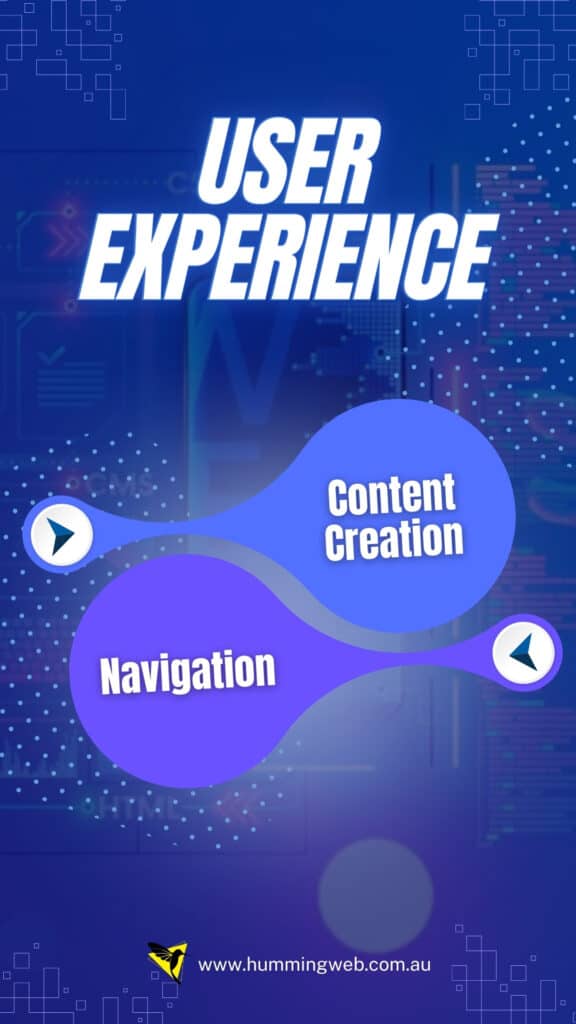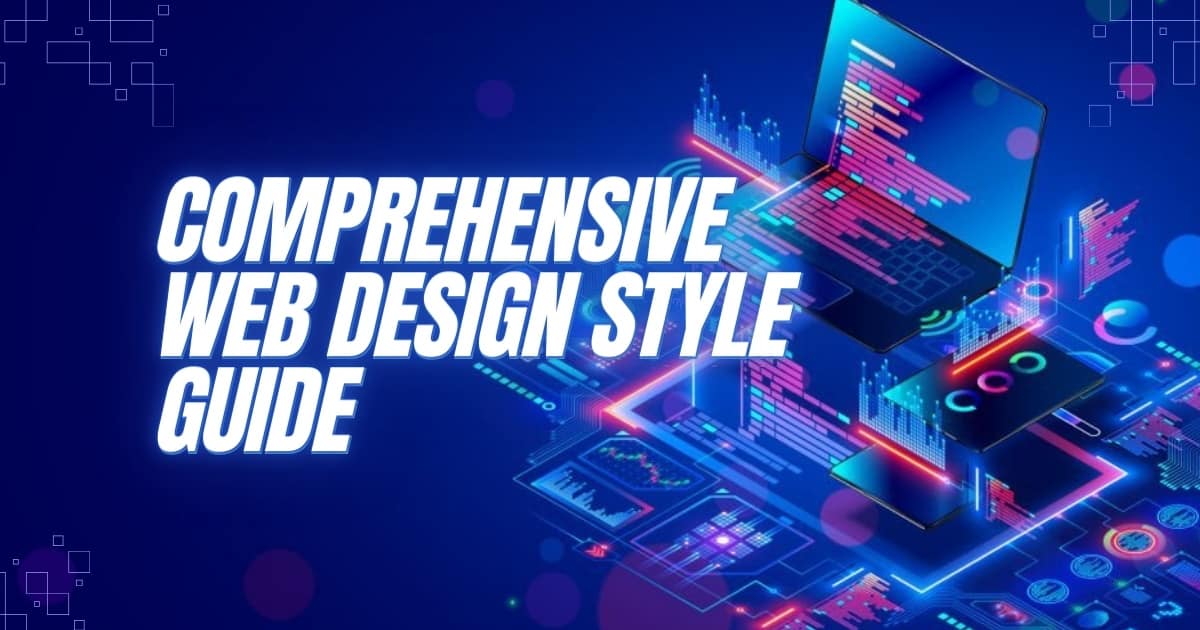A comprehensive web design style guide is a crucial tool for any web designer. It is a document that outlines all the design elements and guidelines that are necessary to create a consistent and cohesive website. The guide ensures that all design elements such as typography, color palettes, icons, images, and layouts are used consistently throughout the website. Understanding the basics of a web design style guide is important for any designer. It is a critical component that helps to ensure that your website is visually appealing and easy to navigate. It also helps to establish a brand identity and maintain consistency across all your digital platforms. Design principles are essential when creating a web design style guide. These principles include balance, contrast, hierarchy, and repetition. They help to create a visually appealing website that is easy to navigate. The guide covers guidelines for typography, color palettes, and images.
Key Takeaways
- A web design style guide is crucial for any website designer.
- Understanding the basics, design principles, and brand identity is important when creating it.
- The style guide template helps to maintain consistency and ensure a visually appealing website.
Understanding the Basics
What is a Web Design Style Guide
A web design style guide is a document that outlines the design standards and guidelines for a website. It provides a detailed description of the design elements, such as color schemes, typography, layout, and imagery, that should be used consistently throughout the website. It serves as a reference for designers, developers, and content creators to ensure that the website remains consistent and cohesive in its design.
Importance of Consistency
Consistency is a crucial aspect of web design. A consistent design helps to create a sense of familiarity and trust with the target audience. When users see consistent design elements, they are more likely to feel comfortable and confident in using the website. Guides help to ensure that the website is consistent by providing a set of rules and guidelines that must be followed. It also saves time and effort in the design process. Instead of starting from scratch with every new design element, you can refer to the style guide for web design to ensure that you are using the correct colors, typography, icons, and layout. This can help to speed up the design process and ensure that the website remains consistent over time. In summary, understanding the basics of a web design style guide is essential to creating a consistent and cohesive website design. By following the guidelines outlined in the web style guide, you can ensure that your website remains consistent and professional-looking, which will help to build trust with your visitors.
Design Principles
When designing a website, it’s important to establish a set of design principles that will guide your decisions and ensure consistency throughout the site. Design trends and principles are essential for creating a comprehensive style guide for a website.

Typography
Typography is a crucial aspect of web design. It not only affects the readability of your content but also plays a role in the overall look and feel of your site. When choosing fonts, consider the following typography hierarchy:
- Heading font: This should be a bold, attention-grabbing font that sets the tone for your site.
- Subheading font: This font should be slightly smaller and less bold than your heading font.
- Body font: This font should be easy to read and should complement your heading and subheading fonts.
In addition to choosing the right fonts, it’s important to establish font sizes and line heights that are consistent throughout your site.
Color Palette
Your color palette should be carefully chosen to reflect your brand and to create a visually appealing site. Choose a set of primary colors that will be used throughout your site, and establish rules for when and how they should be used on your website. In addition to primary colors, consider establishing a secondary color palette for use in specific situations, such as call-to-action buttons or hover effects, ensuring that the design is consistent.
Layout and Spacing
Layout and spacing are key to creating a visually appealing and easy-to-navigate site. Establish rules for layout and spacing that will guide the placement of elements on your site. Consider the following layout and spacing rules:
- Use a grid system to ensure consistency in the placement of elements.
- Establish rules for the spacing between elements on grids, such as margins and padding.
- Use white space effectively to create a clean and uncluttered look.
By establishing clear design principles that cover typography, color palette, layout, and spacing, you can create a comprehensive guide for your website that will ensure consistency and professionalism throughout your site.
Brand Identity
Your brand identity is the way your company presents itself to the world. It includes your logo, brand recognition, brand values, brand voice, and more. A brand style guide should include guidelines for maintaining your brand identity across all digital platforms.
Logo and Icon Usage
Your logo is the visual representation of your brand. It should be used consistently across all digital platforms to ensure brand recognition. It should include guidelines for logo usage, such as size, placement, and color. Additionally, your guide should include guidelines for icon usage, including style and placement.
Brand Voice and Values
Your brand voice and values are the tone and messaging used in all communications. Your style guide should include guidelines for maintaining a consistent brand voice, including tone, language, and messaging. Additionally, your guide should outline your brand values and how they should be reflected in all communications. Maintaining a consistent brand image is essential for building brand recognition and trust with your audience. Your brand guidelines should be followed closely to ensure that your brand identity is maintained across all digital platforms.
Design Elements
When it comes to designing a website, there are several design elements that you need to consider. In this section, we will discuss the three most important design elements that you need to focus on, which are buttons and links, graphics and images, and forms and tables.

Buttons and Links
Buttons and links are an essential part of any website. They are used to navigate between pages, submit forms, and perform other actions. When designing buttons and links, you need to consider the following:
- Button style: The style of your buttons should be consistent throughout your website. You can use different colors, shapes, and sizes to differentiate between different types of buttons.
- Link style: Links should be easy to distinguish from regular text. You can use underlining, bold text, or a different color to make your links stand out.
Graphics and Images
Graphics and images are an excellent way to make your website more visually appealing. When using graphics and images, you need to consider the following:
- Branded graphics: Use graphics that are consistent with your brand. This will help to reinforce your brand identity and make your website more memorable.
- Pictures and photos: Use high-quality pictures and photos that are relevant to your content. Avoid using stock photos that look generic and unoriginal.
Forms and Tables
Forms and tables are used to collect data from your users. When designing forms and tables, you need to consider the following:
- Form elements: Use form elements that are easy to understand and use. Avoid using jargon or technical terms that your users may not understand.
- Tables: Use tables to present data in a clear and organized way. Use alternating row colors to make your tables easier to read.
In conclusion, when designing a website, it is essential to consider the design elements of buttons and links, graphics and images, and forms and tables. By following the guidelines outlined in this section, you can create a visually appealing and user-friendly website.
Development Considerations
When it comes to developing a comprehensive guide for designing the style of websites. , there are several key considerations that you need to keep in mind. In this section, we’ll take a look at two important areas of focus: CSS and HTML, and downloadable assets.
CSS and HTML
One of the most important considerations when developing a style guide is the use of CSS and HTML. These two languages form the backbone of any website, and it’s crucial that they’re used effectively in order to create a consistent and cohesive design. To ensure that your guide is effective, it’s important to establish clear guidelines for how CSS and HTML should be used. This might include guidelines for things like:
- Naming conventions for classes and IDs
- Specific CSS properties that should be used (or avoided)
- Best practices for structuring HTML code
By establishing these guidelines, you can ensure that all developers working on your website are on the same page and that the final product is consistent and functional.
Downloadable Assets
Another important consideration when developing a style guide is the use of downloadable assets. These might include things like images, fonts, and other media that are used throughout your website. To ensure that these assets are used effectively, it’s important to establish guidelines for things like:
- Image sizes and formats
- Font choices and sizes
- Best practices for compressing and optimizing media
By establishing these guidelines, you can ensure that all downloadable assets are consistent in terms of quality and format, which can help to improve the overall user experience of your website. By establishing clear guidelines for these areas, you can ensure that your website is consistent, functional, and visually appealing.
User Experience
When it comes to web design, user experience (UX) is crucial. Your website should be designed in a way that makes it easy for your potential customers to navigate and find the information they need quickly and efficiently. This can be achieved through a variety of techniques, including intuitive navigation and well-crafted content.

Navigation
Navigation is an essential part of user experience. Your website’s navigation should be intuitive and easy to use. This means that your potential customers should be able to find what they’re looking for quickly and easily. Consider using a drop-down menu or a hamburger menu to make navigation more straightforward. It’s also essential to make sure that your navigation is consistent throughout your website. This means that your potential customers should be able to find the same information in the same place on every page. This consistency will help your potential customers feel more comfortable navigating your website, which can lead to increased engagement and conversions.
Content Creation
Content creation is another critical aspect of user experience. Your website’s content should be well-written, informative, and engaging. This means that you should take the time to craft content that is both informative and easy to read. Consider breaking up your content into smaller sections, using bullet points, and using bold text to highlight important information. This will make it easier for your potential customers to read and understand your content, which can lead to increased engagement and conversions. When creating content, it’s also essential to consider your potential customers’ needs and interests. This means that you should take the time to research your potential customers’ pain points and interests and create content that addresses these issues. By doing this, you can create a website that is tailored to your potential customers’ needs, which can lead to increased engagement and conversions. Overall, user experience is a crucial part of web design. By focusing on intuitive navigation and well-crafted content, you can create a website that is easy to use and engaging for your potential customers.
Design Systems and Tools
When it comes to creating a comprehensive style guide, having a solid design system is crucial. A design system is a collection of reusable components, guidelines, and principles that help ensure consistency and efficiency in design. In addition to a design system, there are various tools available that can help streamline the design process.
Material Design
Material Design is a design language developed by Google that emphasizes a clean, modern aesthetic. It is based on the principles of material design, which include a focus on typography, color, and imagery. Material Design also includes a set of guidelines and components that can be used to create consistent and cohesive designs. When incorporating Material Design into your guide, it is important to understand the principles and guidelines that make up the language. This includes understanding the typography, color palette, and iconography, as well as the various components that can be used to create interfaces.
Pattern Library
A pattern library is a collection of design patterns, components, and guidelines that can be used to create consistent and reusable design elements. A pattern library can help ensure consistency across multiple projects and can save time by providing pre-built components that can be easily integrated into designs. When creating a pattern library for your style guide, it is important to consider the types of components that will be included. This may include things like buttons, forms, and navigation elements, as well as more complex components like modals and carousels. It is also important to consider the design patterns that will be used, such as grid layouts and card designs. Overall, having a comprehensive design system and utilizing tools like Material Design and pattern libraries can help ensure consistency and efficiency in design. By incorporating these elements into your style guide, you can create a more cohesive and effective design process.
Maintaining Your Style Guide
Once you have created your comprehensive style guide for your website, it is important to maintain it to ensure consistency and efficiency in future designs. Here are some tips on how to keep your guide up-to-date and effective.
Updates and Additions
As your website evolves, you may need to make changes to your style guide. It is essential to keep it updated with the latest design elements, typography, color schemes, and other design specifications. Regularly review your guide to ensure that it remains consistent with your website’s design. Add new design elements and specifications as required to maintain consistency across all pages of your website.
Efficiency and Future Designs
An effective style guide can save you time and effort in future designs. By using a consistent design language, you can streamline the design process and create new pages or sections more efficiently. As you maintain your style guide, consider how it can be improved to make future designs more efficient. For example, you may want to add templates or design patterns that can be reused across different pages or sections.
Consistency
Consistency is key when it comes to web design. Your style guide should be a reference point for all design decisions, ensuring that all pages of your website have a consistent look and feel. To maintain consistency, ensure that it is accessible to all members of your team. This will help to ensure that everyone is on the same page when it comes to design decisions. In conclusion, it is essential to ensure consistency, efficiency, and future designs. Regularly review and update your style guide to keep it relevant and effective. By following these tips, you can create a style guide that will help you to create beautiful and consistent designs for your website.
Frequently Asked Questions
What are the benefits of having a comprehensive web design style guide?
How can a website style guide improve user experience?
What are some key elements to include in a web design style guide?
A web design style guide should include key elements such as typography, color palette, imagery, iconography, and layout. It should also include guidelines for accessibility, responsive design, and content creation.
What are some best practices for creating a comprehensive web design style guide?
Some best practices for creating a comprehensive style guide for websites include involving all stakeholders in the process, keeping the guide up-to-date, and providing clear and concise guidelines. It’s also important to test the guide to ensure that it is effective and user-friendly.
How can a style guide improve collaboration between designers and developers?
A style guide can improve collaboration between designers and developers by providing a clear set of guidelines for both teams to follow. This helps to ensure that everyone is on the same page and that the website is consistent and accessible. It also saves time and resources by reducing the need for back-and-forth communication between teams.
What are some common mistakes to avoid when creating a web design style guide?
Some common mistakes to avoid when creating a web design style guide include being too restrictive, not involving all stakeholders in the process, and not keeping the guide up-to-date. It’s also important to test the guide to ensure that it is effective and user-friendly.


